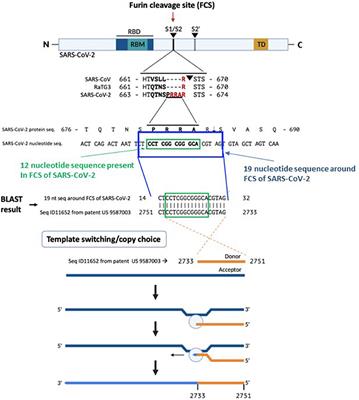A complicated paper but summarized well by a family friend, genetic scientist working in Cambridge, UK
————————————————————————
Why was there a patent in 2016 for SEQ ID11652 which contained the 12 nucleotide furin cleavage site (FCS)?
The likelihood of the sequence being in SARS-Cov-2 randomly is very rare - 3.21 ×10−11.
The proprietary sequence SEQ ID11652, read in the forward direction, encodes a 100% amino acid match to the human mut S homolog 3 (MSH3).
MSH3 is a DNA mismatch repair protein. SEQ ID11652 is transcribed to a MSH3 mRNA that appears to be codon optimized for humans.
MSH3 replacement with a codon-optimized mRNA sequence for human expression likely has applications in cancers with mismatch repair deficiencies.
Overexpression of MSH3 is known to interfere with mismatch repair. which holds virologic importance.
Induction of DNA mismatch repair deficiency results in ♦️permissiveness of influenza A virus (IAV) infection of human respiratory cells and increased pathogenicity (14). ♦️
Mismatch repair deficiency may ♦️extend shedding of SARS-CoV-2 (15, 16).♦️
☝️key statements which indicate gain of function manipulation and patenting of an FCS which has 100% homology to the human MSH3.
The key question then needs to be asked:
Why does SARS-Cov-2 contain a 12 nucleotide sequence which shows 100% homology to human MSH3 (very unlikely to have occurred naturally) which effectively makes the presence of such a sequence in human respiratory cells more prone to influenza A infection and increased pathogenicity?
This sentence politely says it all:
The presence in SARS-CoV-2 of a 19-nucleotide RNA sequence encoding an FCS at amino acid 681 of its spike protein with 100% identity to the reverse complement of a proprietary MSH3 mRNA sequence is highly unusual.
I don’t think any explanations for this is going to be easily forthcoming.
https://www.frontiersin.org/ar....ticles/10.3389/fviro
TIP: As this platform only has 3 visibility settings
(Everyone, Friends, Only Me)
if you want to interact with people without laying bare your whole life,
try creating a page, group, or topic in the forum.
GROUPS can be set to private/invite only.
Don't forget to change the privacy settings on your posts
if you don't want everyone to see them!





